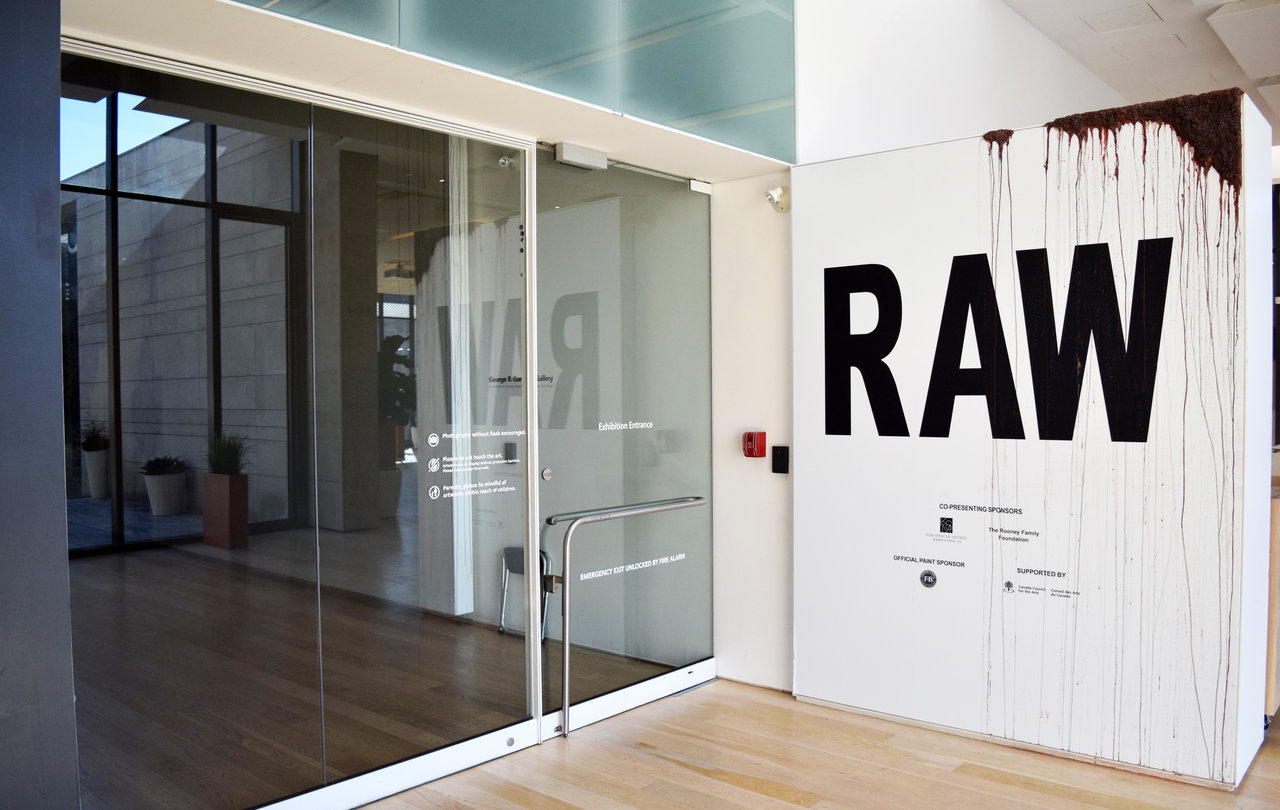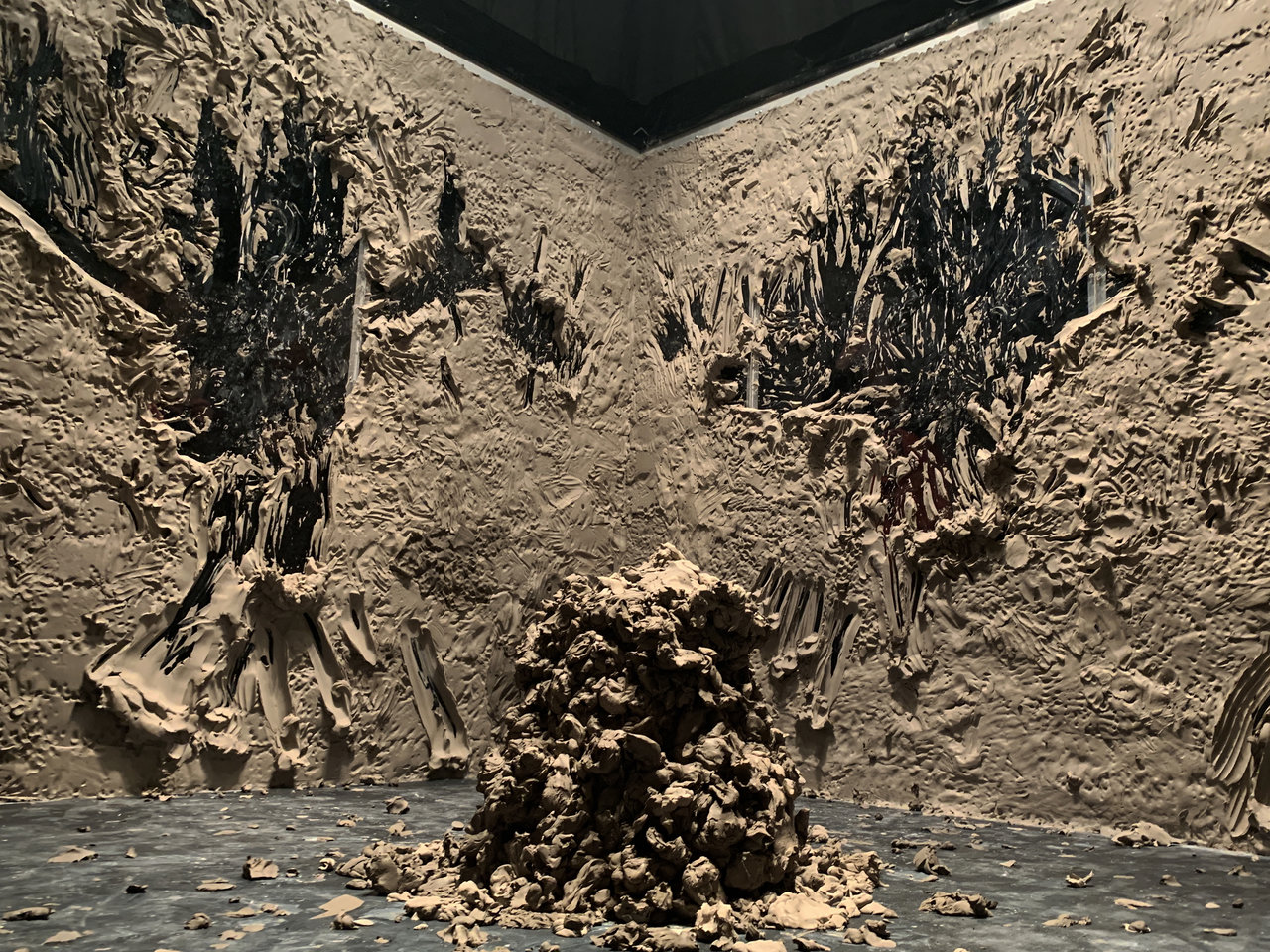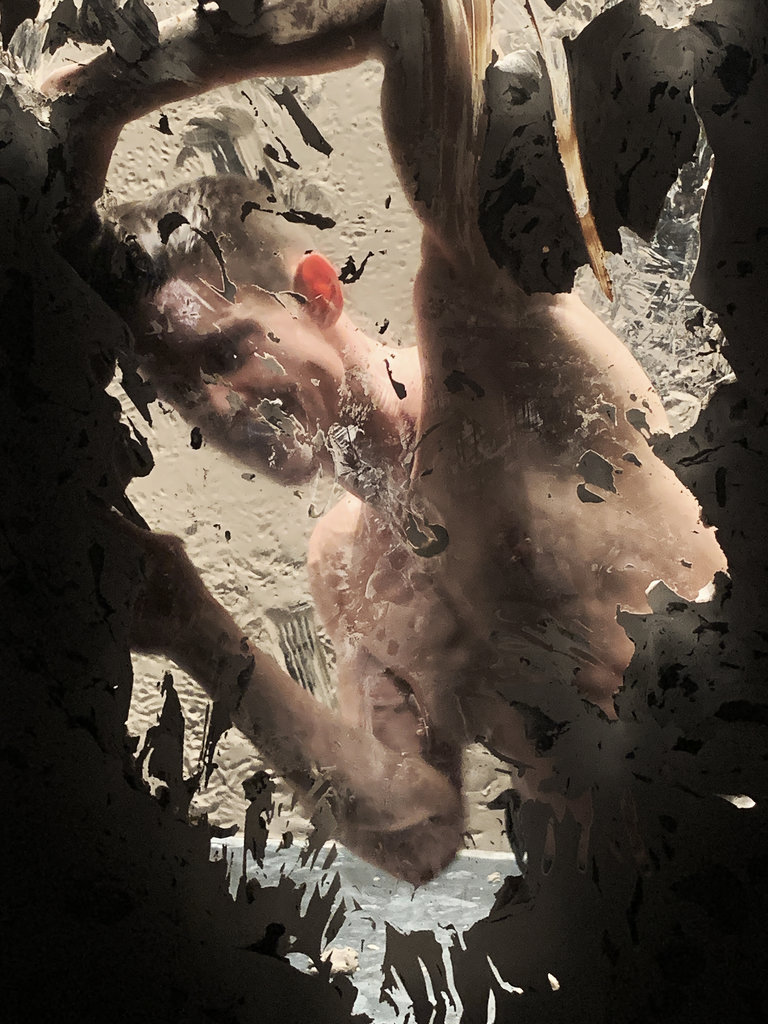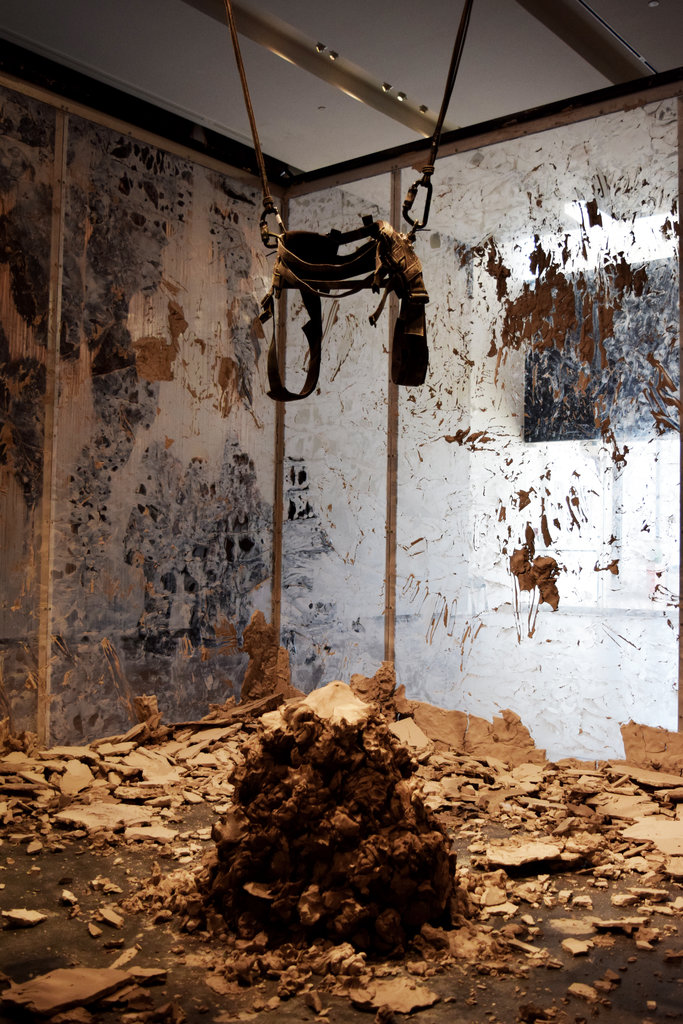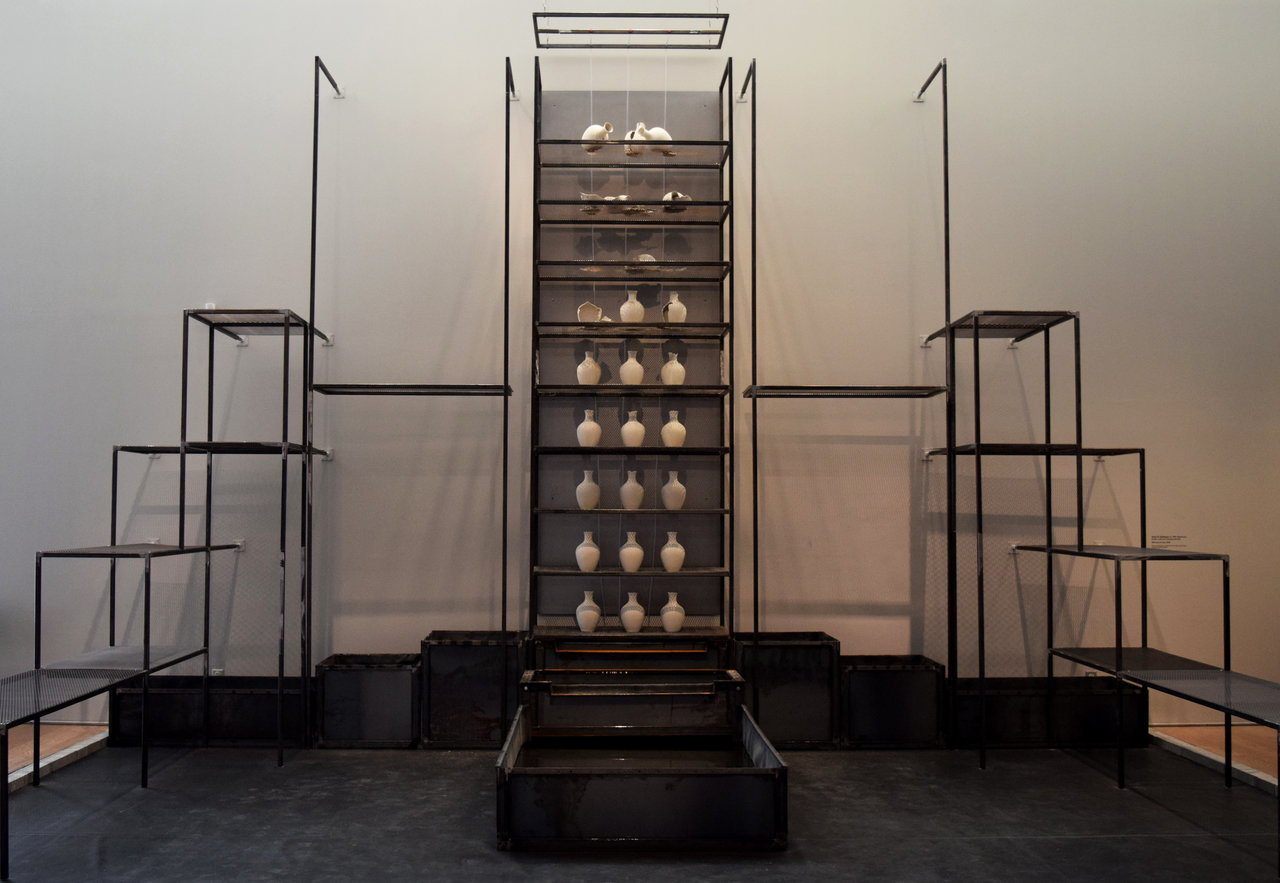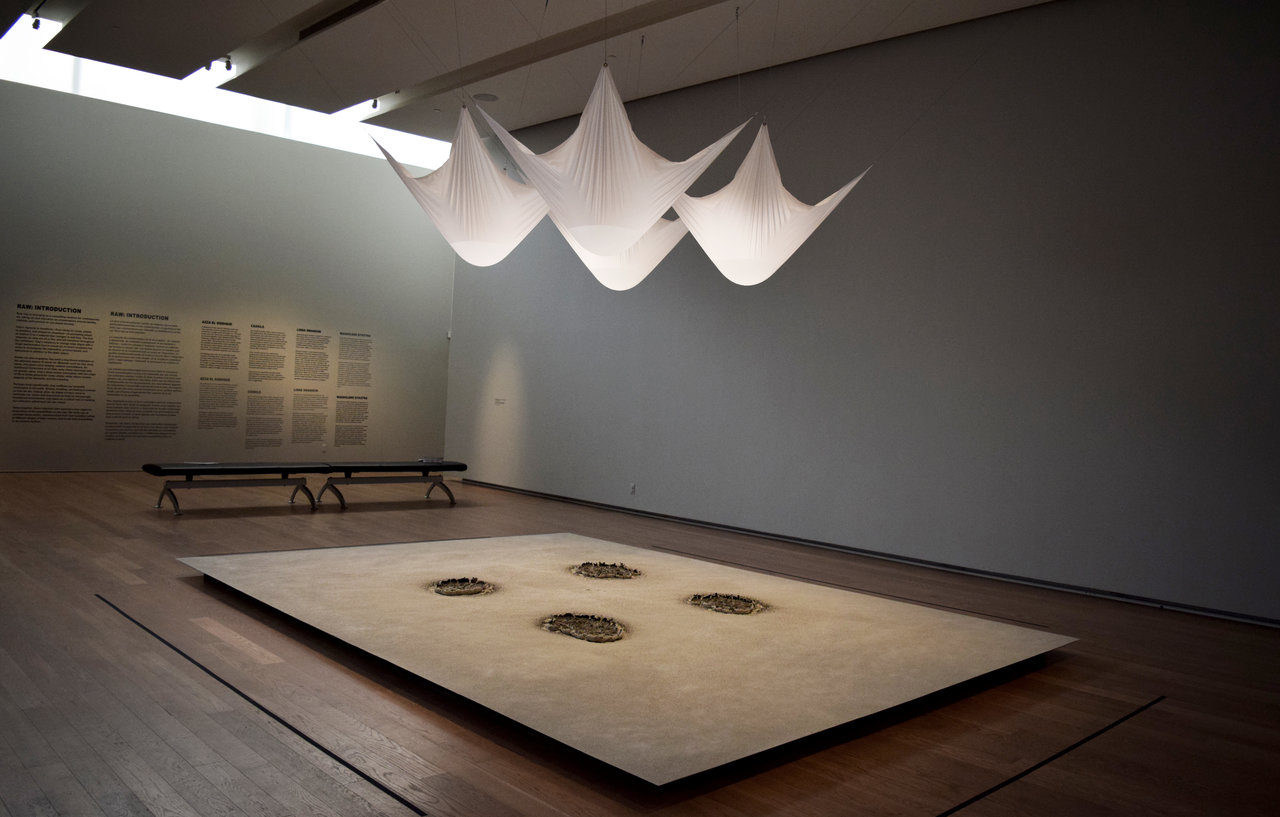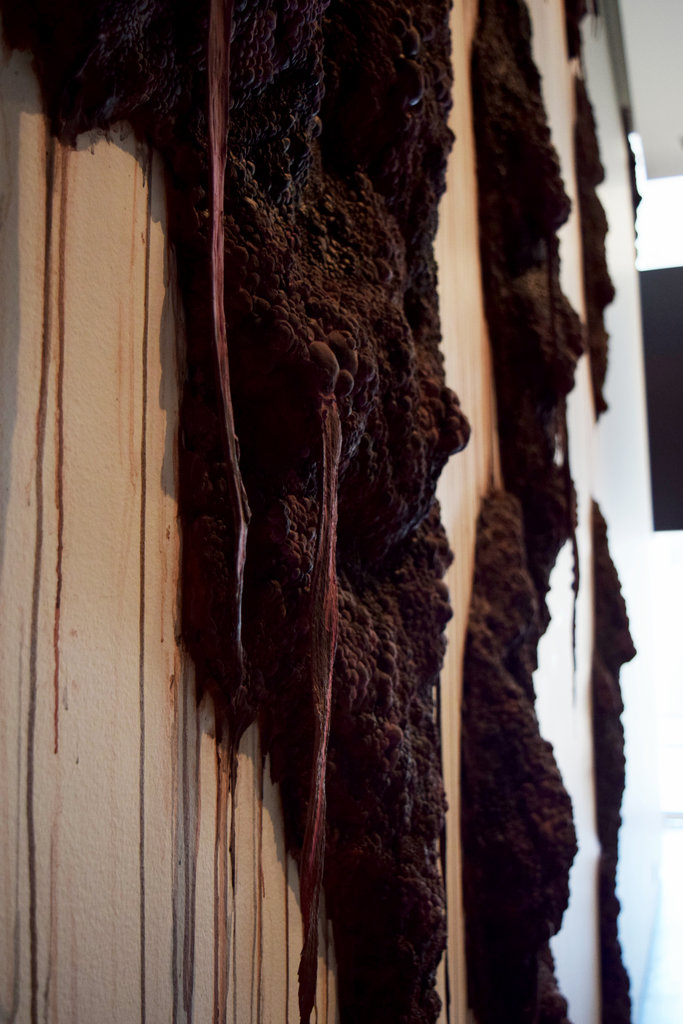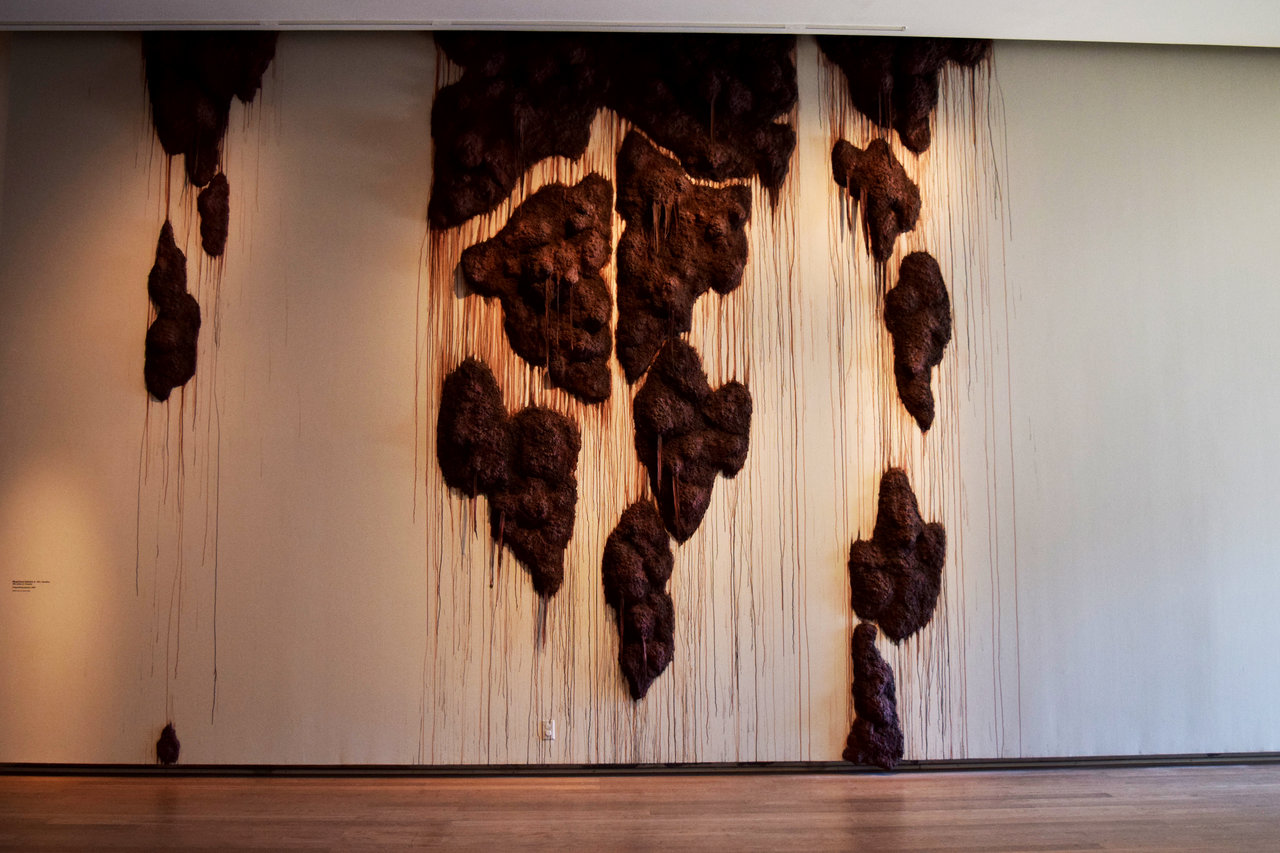Clay is a wonderfully terrestrial and tensile medium. Its unique properties offer so many opportunities for creative expression, thus it has garnered – and continues to garner – a prominent place in cultures throughout the expanse of human civilization. It has not only served as an artistic catalyst, but is often integral to our historical record, our notions of physicality, and our primal connection to the earth. As such, the Gardiner Museum presents its newest special exhibition RAW, featuring four contemporary artists that offer wildly distinct understandings of clay and its relationships with humanity. These pieces explore clay in its various raw forms, whether it be moist or dry, moldable or brittle, whole or disintegrated. Each one puts forth individual reflections on the cultural and societal importance of clay while cumulatively asserting its relevance to commentaries on identity, environmentalism, and virtual isolation.
This program began with a performance by Cassils entitled Up to and Including Their Limits. Tied to a flying harness, the artist positioned himself within a square plexiglas arena, bricks of raw unfired clay barricading the surrounding interior walls.
Cassils Up to and Including Their Limits performing arena at the beginning
As the performance began, the artist arduously tore at the wet medium with his bare hands, increasingly enabling the audience to become voyeurs on his labors as “windows” opened up. Alternating between aerial suspension and earthbound movement, each bit of clay he salvaged was then powerfully thrown together to create a crude pedestal whereupon Cassils ultimately stood in exhaustion and triumph.
Cassils performing Up to and Including Their Limits, February 20, 2020
The performance itself was a defiant display of raw physicality and determination. It was commemorating Carolee Schneemann’s Up to And Including Her Limits (1971-1976) and reimagining it to encourage visibility on transgender and non-binary identities, particularly in the face of ongoing violence and disenfranchisement towards those communities. Now, its remnants include video documentation of the performance, the crumbled walls of the dry clay, and Cassil’s pedestal and harness that serve as a monument to their message.
Cassils Up to and Including Their Limits performing arena at the end
No less monumental is Azza El Siddique’s Measure of one, a colossal installation combining clay, metalcraft, and water to illustrate the progression of time and its effect on human history. Modelled after an Egyptian temple erected for the 7th century BCE Nubian pharaoh, Tirhaga (Taharqa), the structure consists of a large central tower, flanked by shelved transepts and overlooking a small cistern. The central tower holds rows upon rows of unfired urns. Water is then pumped up from the reservoir below and allowed to drip on and deteriorate the works. As more time passes and the urns lose their integrity, they are shifted to the transepts for viewing and are likewise replaced by new urns to similarly erode. This brings to question our notions of memory and loss, which applies beyond institutionalized studies of history to include personal notions of our individual and collective pasts.
Azza El Siddique, Measure of one
Continuing with the theme of water and transformation, Linda Swanson presents her TEMPLUM OF A PRECIOUS THING OF NO VALUE, A SHAPELESS THING OF MANY SHAPES. It consists of bentonite clay dust delicately sifted onto a flat base. Overhead are four water-filled membranes that gradually trickle water onto the loose surface, essentially creating a topographic display of ongoing development. It is impossible to determine when the drops will fall, how they will impact the surface, and what the outcome will be; all that is known is that it will change over time. Just as the clay will transition over time, so too are we, the audience, invited to consider the cosmic order of things: how events beyond our control, glanced upon by our microscopic place in the universe, impact our future.
Linda Swanson, TEMPLUM OF A PRECIOUS THING OF NO VALUE, A SHAPELESS THING OF MANY SHAPES
Last but certainly not least is Magdolene Dykstra’s Polyanthroponemia, a comparison of human civilization and microbiology. Akin to viruses and other forms of parasitic microbes, human expansionism is essentially an infestation of the planet whereby resources are exceedingly harvested at the expense of Earth’s own well-being. In order to illustrate this concept, Dykstra fixes large growths of clay to the space’s walls and entrance to emulate festering microbial life that subsequently expand over the course of the exhibition.
Magdolene Dykstra’s Polyanthroponemia
RAW is a fascinating demonstration of how clay – despite being a natural medium and ancient artform – can still adapt to and dominate contemporary critiques of humanity and society. In fact, it is exactly its antiquity and earthen quality that lends to its infinite potential. The evolving quality of the exhibition encourages multiple visits to see how the pieces progress over time. Ultimately, it is more so the development of the clay than the final product that evokes curiosity and engagement.
Text and photo: Simon Termine
*Exhibition information: March 5 – June 7, 2020, Gardiner Museum, 111 Queen’s Park, Toronto. Museum hours: Mon, Tues, Thurs, Fri 10 am – 6 pm; Wed 10 am – 9 pm; Sat & Sun 10 am – 5 pm.

